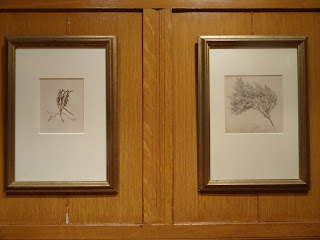'Bowness-on-Windermere is a sprawling tourist town on the shore of Windermere, about halfway along the 12 mile length of the lake between Waterhead at the North end, and Lakeside at the South end. It developed after the opening of the railway line from Oxenholme and Kendal to Windermere in 1847. Bowness was the nearest accessible point on the lake. Now Cumbria’s most popular destination, the town is busy for much of the year. People come to enjoy the lake for sailing and watersports, or just to relax and enjoy the atmosphere of the area and the town’s delightful setting.'
'Situated in the very heart of Bowness on Windermere, the Royal Oak, a small family run Inn, is literally a stones throw from the Bowness bay piers, Lake Windermere and only a few minutes walk from the many traditional craft and gift shops.'
'When the architect MH Baillie Scott built a holiday home overlooking Windermere for his client Sir Edward Holt he created Blackwell, a masterpiece of twentieth-century design; a perfect example of the Arts & Crafts Movement.' Baillie Scott said, “On crossing this threshhold, we pass into a charmed territory where everything shall be in harmony.”
'Blackwell retains many of its original decorative features, including a rare hessian wall-hanging in the Dining Room, leaf-shaped door handles, curious window catches, spectacular plasterwork, stained glass and carved wooden panelling by Simpsons of Kendal. The rooms contain furniture and objects by many of the leading Arts & Crafts designers and studios - metalwork by WAS Benson, ceramics by Pilkingtons and Ruskin Pottery and furniture by Morris & Co., Stanley Webb Davies, Ernest Gimson and Baillie Scott himself.
Recent acquisitions of furniture by Baillie Scott are on display, including an oak and ebony inlaid barrel chair with slatted sides, sideboard and a set of dining chairs. Blackwell offers more than most historic houses with several rooms displaying historical exhibitions that explore different aspects of the Arts & Crafts Movement.'
Christina Rossetti - When I Am Dead, My Dearest.
'When the architect MH Baillie Scott built a holiday home overlooking Windermere for his client Sir Edward Holt he created Blackwell, a masterpiece of twentieth-century design; a perfect example of the Arts & Crafts Movement.' Baillie Scott said, “On crossing this threshhold, we pass into a charmed territory where everything shall be in harmony.”
'Blackwell retains many of its original decorative features, including a rare hessian wall-hanging in the Dining Room, leaf-shaped door handles, curious window catches, spectacular plasterwork, stained glass and carved wooden panelling by Simpsons of Kendal. The rooms contain furniture and objects by many of the leading Arts & Crafts designers and studios - metalwork by WAS Benson, ceramics by Pilkingtons and Ruskin Pottery and furniture by Morris & Co., Stanley Webb Davies, Ernest Gimson and Baillie Scott himself.
Recent acquisitions of furniture by Baillie Scott are on display, including an oak and ebony inlaid barrel chair with slatted sides, sideboard and a set of dining chairs. Blackwell offers more than most historic houses with several rooms displaying historical exhibitions that explore different aspects of the Arts & Crafts Movement.'
Work by John Ruskin, Eric Gill and Paul Cezanne can also be seen.
-----------------------------------------------------------------------------------------------




















No comments:
Post a Comment